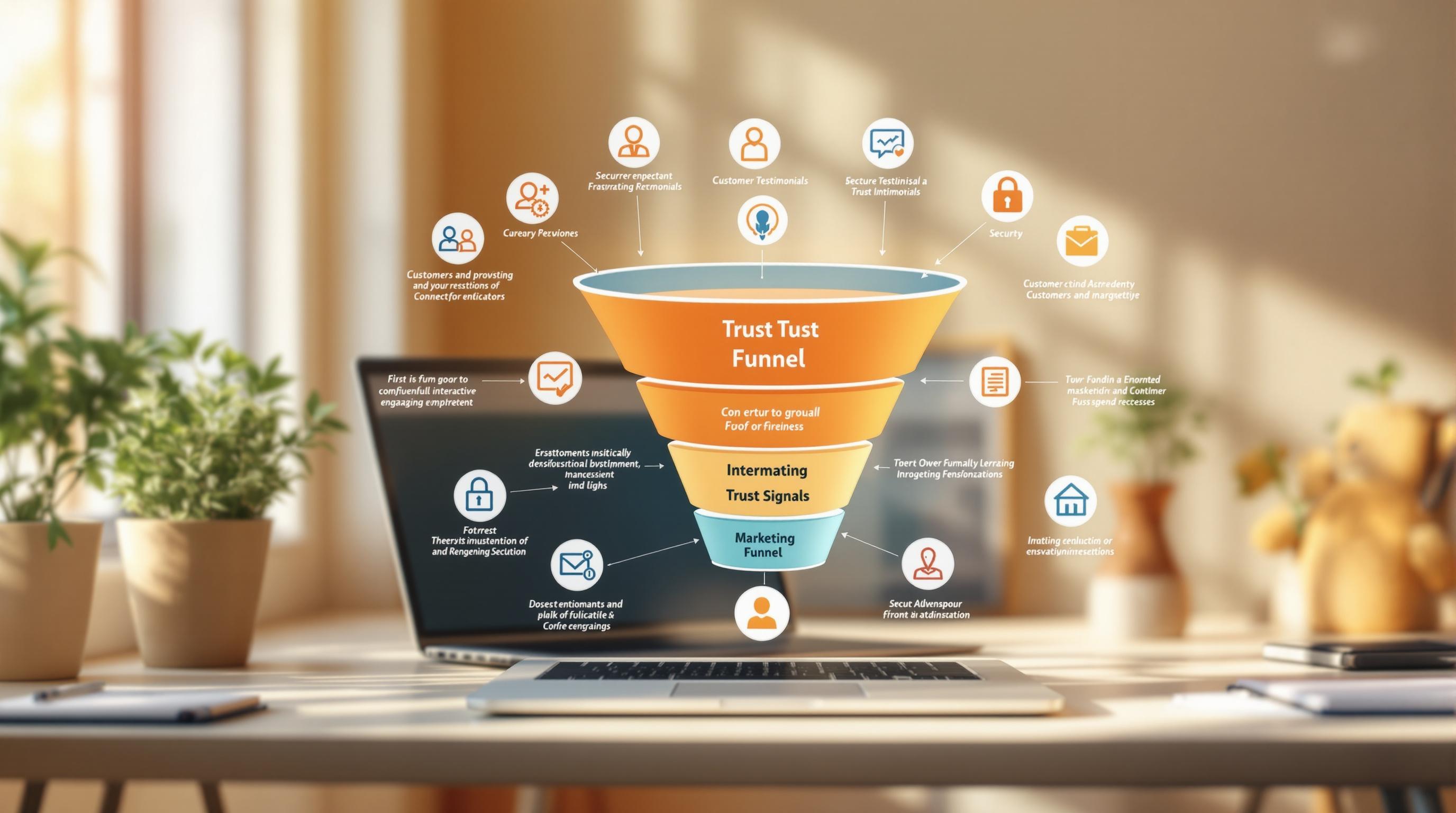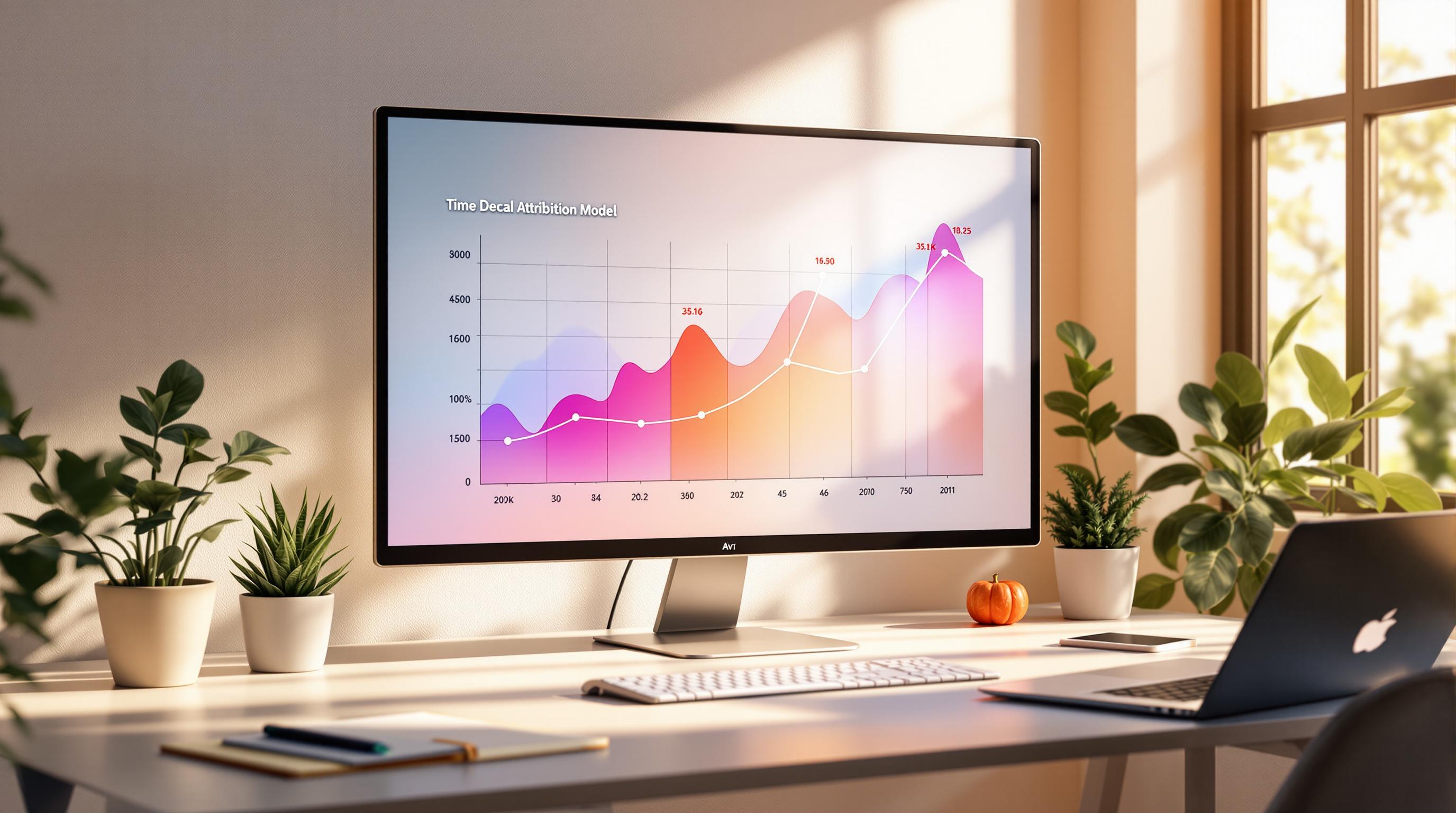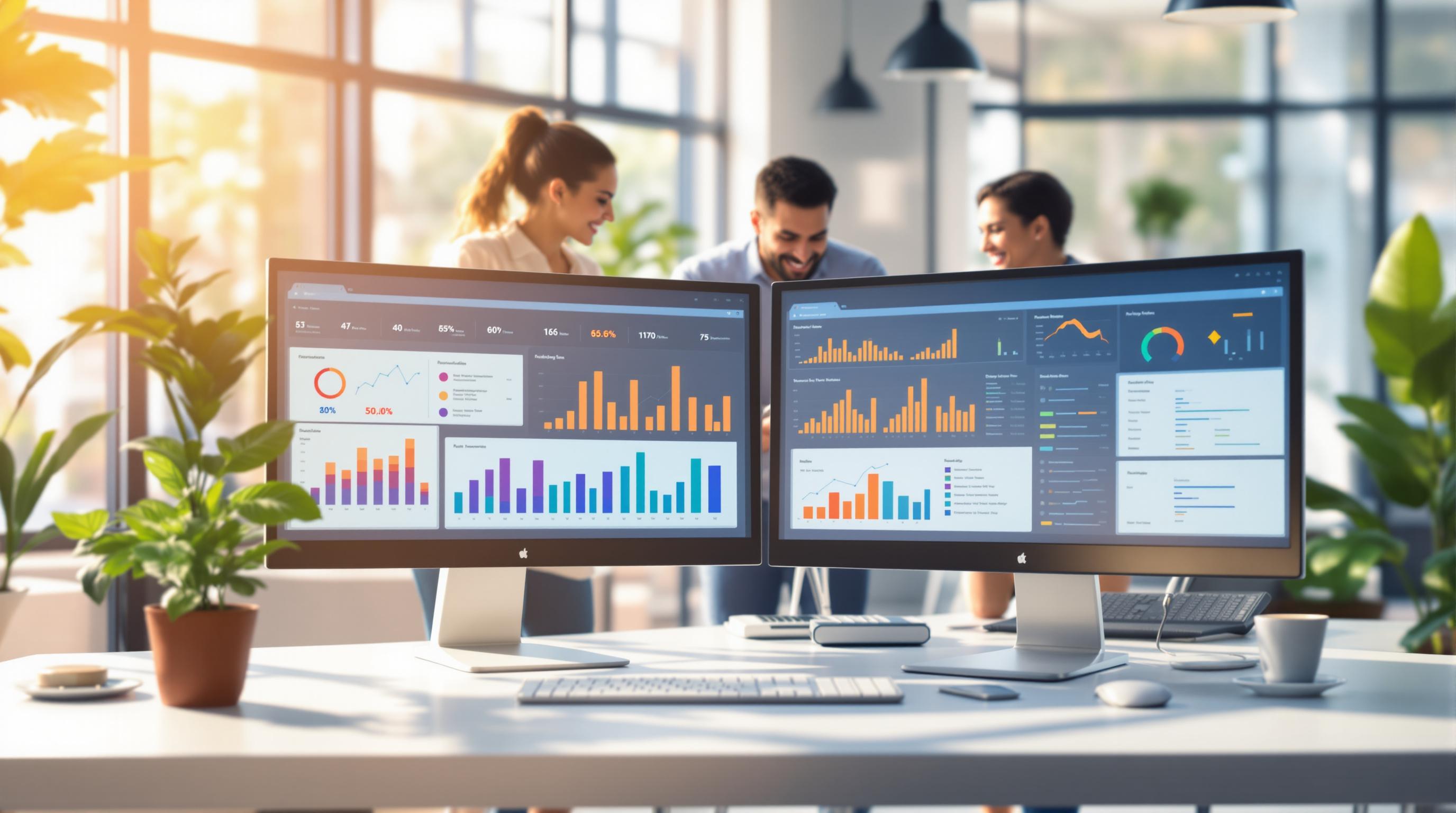Behavioral triggers are automated emails sent based on customer actions, like visiting a website, abandoning a cart, or clicking an email link. These emails are more effective than standard campaigns, delivering 71% higher open rates and 102% better click-through rates. Here's what you need to know:
-
Types of Behavioral Triggers:
- Website Activity: Emails triggered by page views or FAQ visits.
- Shopping Behavior: Cart abandonment reminders or post-purchase follow-ups.
- Email Engagement: Re-engagement campaigns for inactive subscribers.
-
Why Use Them:
- They generate 497% better results than non-triggered campaigns.
- Represent only 3% of email volume but drive 16% of email revenue.
- How to Set Them Up:
-
Key Stats:
- Mobile opens account for 78% of emails.
- Personalized emails boost click-through rates by 75%.
Behavioral triggers help you send the right email to the right person at the right time, improving engagement and conversions.
Email Triggers Explained! Automate Your Marketing Like a Pro
Common Behavioral Trigger Types
Explore how different behavioral triggers - based on website activity, shopping habits, and email responses - can boost your marketing efforts.
Website Behavior Triggers
These triggers activate when visitors interact with your website, like browsing multiple related pages. For instance, if someone views several articles on a specific topic, you can follow up with related resources.
Here’s how leading brands use website behavior triggers:
| Action | Trigger Example | Results |
|---|---|---|
| Product Page Views | Hammacher Schlemmer sends emails featuring products tied to users' search queries | 29% of email-driven purchases come from automated sends |
| FAQ Visits | Under Armour provides detailed follow-up resources based on FAQ visits | Achieves 23% higher open rates than standard campaigns |
Now let’s see how shopping behaviors open up even more opportunities for triggers.
Shopping Behavior Triggers
Shopping behavior triggers focus on actions tied to purchases, helping recover lost sales and strengthen post-purchase relationships. For example:
- Cart abandonment reminders: Casper uses lighthearted messages to bring customers back to their carts.
- Post-purchase follow-ups: Abercrombie & Fitch sends simple thank-you emails to deepen customer connections.
"The value of email automation...is increasing the response you get from marketing activity...upping the number of positive actions taken by your customers, from visiting your website to making a purchase." - Tim Watson, Consultant
Email Response Triggers
Email response triggers rely on how subscribers engage with your emails. These triggers can be based on:
- Opening emails
- Clicking on links
- Ignoring messages
- Time since the last interaction
Horze uses this strategy to re-engage inactive subscribers by offering a 25% discount to those who haven’t opened recent emails. Tile, on the other hand, sends notifications when customers successfully refer others, keeping engagement high.
Timing is everything - over 75% of email revenue comes from well-timed, triggered messages. These triggers help create email campaigns that respond directly to customer actions, driving better results.
Setting Up Trigger Campaigns
Mapping Customer Actions
To create effective trigger campaigns, start by mapping out your customer's journey. Use tools like Google Analytics and your CRM to analyze customer interactions at key touchpoints. By understanding the stages of their journey - discovery, consideration, purchase, loyalty, and advocacy - you can craft automated emails tailored to their specific needs. For instance, Warby Parker used a five-stage strategy that led to a 30% boost in repeat purchases by delivering targeted messages at each stage.
Here’s how to map customer actions:
- Monitor digital behaviors like website visits, product views, and email engagement.
- Pinpoint critical moments where customers might need extra information or support.
- Group your audience based on behavior patterns and how engaged they are.
Once you’ve mapped the journey, choose email tools that match these insights.
Choosing Email Tools
Pick an email automation platform that fits your campaign goals. Below is a quick comparison of some popular options:
| Tool | Best For | Key Features | Price Range |
|---|---|---|---|
| Omnisend | Dynamic segmentation | Behavioral triggers, SMS integration | $25–$100/month |
| Klaviyo | Visual automation | Drag-and-drop flow builder | $100–$500/month |
| HubSpot | No-code solutions | CRM integration, landing pages | $50–$800/month |
| Drip | E-commerce focus | Revenue analytics, personalization | $39–$200/month |
"The best place to start using automation to increase the amount of marketing conversations is with people who are already engaging with you." - Tim Watson, Consultant
For more tips and resources on improving your email campaigns, check out the Marketing Funnels Directory at https://topmarketingfunnels.com.
After selecting a tool, focus on creating precise trigger rules that align with customer actions.
Building Trigger Rules
Setting up trigger rules involves combining insights from customer behavior with smart automation strategies. Allbirds, for example, segmented their subscribers into New, Returning, and Loyal categories, leading to a 25% increase in email open rates through targeted messaging.
Here’s how to create effective trigger rules:
-
Define Your Triggers
Identify key behaviors that will prompt an automated email. Examples include cart abandonment, viewing specific products, or engaging with an email. -
Establish Conditions
Set clear criteria for when an email should be sent. For instance, an online store might trigger emails based on a customer’s location (to suggest weather-appropriate items), past purchases (to offer personalized deals), or browsing history (to recommend related products). -
Configure Actions
Decide what the email will do - whether it’s sharing personalized product recommendations, offering time-sensitive discounts, providing educational content, or sending follow-up surveys.
sbb-itb-a84ebc4
Writing Trigger Emails
Customizing Email Content
Trigger emails should do more than just include a recipient's name. Studies show that trigger-based emails achieve higher conversion rates compared to standard email blasts. These emails rely on customer actions to craft messages that connect on a deeper level.
To make your trigger emails stand out, focus on these key areas:
- Behavioral Context: Align messages with specific actions like abandoned carts, product views, or sign-ups.
- Customer Segments: Leverage demographic and psychographic data to fine-tune your messaging.
- Dynamic Content: Incorporate content blocks that adjust based on subscriber data.
- Location-Based Elements: Add region-specific offers to make the email more relevant.
"There's a misconception about what email personalization is. It's not just about using someone's name; it's about asking users what they want and need, and how they'd like to be engaged with, then delivering that. This level of personalization truly differentiates your emails from the masses." - Courtney Grab, Senior Customer Marketing Manager at Litmus
Don’t forget to ensure your email design is mobile-friendly to keep users engaged.
Mobile Email Design
With mobile devices responsible for up to 78% of email opens, optimizing for small screens is non-negotiable. In fact, 71.6% of users delete emails that don’t display correctly on their phones.
| Design Element | Recommended Specifications | Why It Matters |
|---|---|---|
| Font Size | Body: 17-22px Headlines: 22px+ |
Improves readability on small screens |
| Button Size | Minimum 44x44px (Apple) 48x48px (Google) |
Makes tapping easier |
| Layout Width | Single column | Avoids horizontal scrolling |
| Image Width | 100% max-width | Ensures proper scaling |
Speed matters too - compress images and use clean code to keep load times short. Place important content and CTAs where they’ll be seen first.
Writing Strong CTAs
Once your email is mobile-optimized, focus on crafting effective calls-to-action (CTAs). Research shows that swapping hyperlinks for buttons can boost conversions by up to 28%.
Here’s how to make your CTAs effective:
- Use Action-Oriented Language: Be specific - replace “Learn More” with something like “Start Your Free Trial.”
- Create Urgency: Use time-sensitive phrases when appropriate.
- Keep It Simple: Stick to 2-3 CTAs per email for the best click rates.
- Experiment: A/B test button text, colors, and placement to see what works best.
"Every email is a sales email." - Joanna Wieber, Copywriting Legend, Copyhackers
One standout example is Sephora’s "Virtual Artist" campaign. Recipients could try makeup products virtually, leading to a 14% jump in click-through rates and a 30% increase in conversions.
Testing and Improving Triggers
Performance Metrics
To fine-tune your trigger emails, keep an eye on these key metrics:
- Engagement: Check open rates and click-through rates to measure interest.
- Conversion: Track actions like sales, sign-ups, or downloads.
- Timing: Look at response times and any delays in delivery.
- Quality: Watch bounce rates and unsubscribes for signs of issues.
With email lists losing about 22.71% of their value each year, regular performance reviews are essential.
Using split testing can help you dig deeper and improve your email campaigns.
Split Testing Methods
When running split tests, focus on these areas:
- Subject Lines: Test personalization against urgency-driven messages.
- Email Content: Experiment with layouts, images, and how much text you include.
- Timing: Adjust the delay between the trigger event and email delivery to see what works best.
- Call-to-Action (CTA): Try different button placements, colors, and wording to maximize clicks.
Multi-step triggered campaigns have been shown to boost sales by 21% compared to single-step approaches.
"The goal is to turn data into information, and information into insight." - Carly Fiorina
Stick to testing one change at a time so you can clearly see what’s making a difference.
Data-Based Adjustments
Use the data from your tests and metrics to make targeted improvements. For example, marketers using behavioral segmentation have seen revenue increases of up to 760%.
- Monitor Engagement Patterns: Adjust trigger timings based on when your audience is most active, considering time zones.
- Refine Segmentation: Use engagement data to identify which triggers resonate most and focus on those.
- Optimize Content Delivery: If certain types of content consistently perform better, tweak your trigger rules to highlight those elements.
These steps ensure your campaigns stay effective and relevant to your audience.
Next Steps
Now that your trigger campaigns are mapped out, it’s time to refine them for even better performance. Did you know optimized trigger emails can lead to 102% higher click-through rates? Small, consistent improvements can make a big difference.
Consider using advanced automation tools. The Marketing Funnels Directory offers a curated list of email platforms, CRM systems, and analytics tools to help take your campaigns to the next level.
Here are two key strategies to focus on:
-
Real-time Response Optimization
- Connect your CRM to email automation for instant, personalized responses.
- Use web analytics to spot where users drop off and create recovery workflows.
- Track customer behavior across different channels to identify upselling opportunities.
-
Advanced Personalization Strategy
Personalized emails can increase click-through rates by 75%. To achieve this, focus on:- Using demographic data to tailor messages.
- Analyzing purchase history for relevant offers.
- Tracking browsing behavior to understand customer interests.
- Recommending products based on individual preferences.
"Triggered emails help to follow the marketing trifecta of sending the right emails at the right time to the right person. If you have not yet thought of sending these emails to your subscriber base, now is the right time."
– Kevin George, Head of Marketing at Email Uplers
Although triggered emails make up just 3% of total email volume, they generate a whopping 16% of email revenue. By integrating tools like Mailchimp and Hotjar, you can fully leverage the power of behavior-driven emails. To dive deeper into advanced automation workflows, check out the courses and resources available in the Marketing Funnels Directory.


